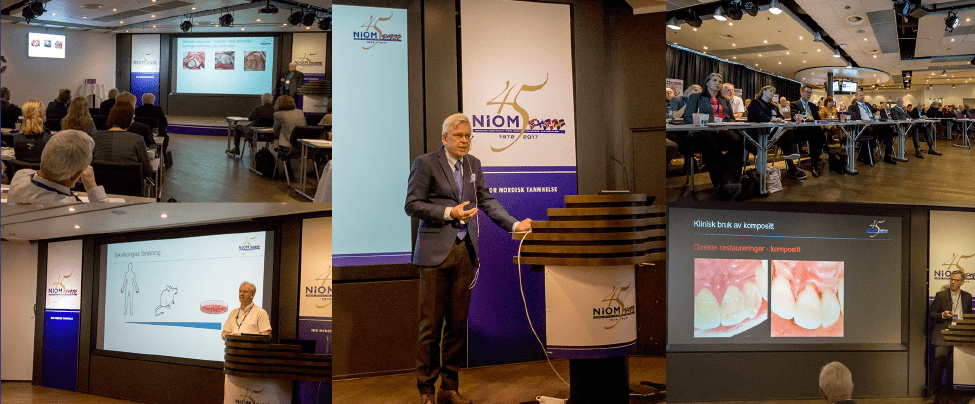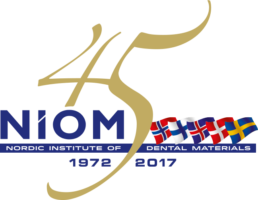
The Nordic seminar entitled “45 Years of Research for Patient Safety” (Forskning og pasientsikkerhet i 45 år) was organized by NIOM on behalf of the Ministry of Health and Care Services. The seminar on May 8th and 9th marked the Norwegian presidency of the Nordic Council of Ministers in 2017 and the 45th anniversary of NIOM.
 On the first day, a whole session was devoted to the research on dental biomaterials at NIOM. NIOM’s research is required to promote patient safety and to be applicable to clinical dentistry.
On the first day, a whole session was devoted to the research on dental biomaterials at NIOM. NIOM’s research is required to promote patient safety and to be applicable to clinical dentistry.
We present some of the highlights from the session here.
Professor Nils Roar Gjerdet explained that dentistry uses an increasingly complex selection of materials and technologies. Digital techniques and processing technologies are being introduced rapidly. For direct restorations with restorative composites and bonding materials, dentists can choose among a growing number of different products within each group of materials, making evidence-based selection demanding. This creates an increasing need for manufacturer-independent characterization and assessments of materials and technologies with regard to properties that ensure good clinical quality.
In her presentation on the composition of dental composite resins, Dr. Ida Stenhagen paid particular attention to bulk-fill materials. Many factors impact the longevity of a dental restoration, for example satisfactory curing of the material. Studies conducted at NIOM have shown that an insufficient curing time leads to poor quality of the restoration and increased risk for leaching of reactive monomers into the oral cavity. This may give rise to allergic reactions in patients.
Our knowledge of the potential of monomers to cause other harmful effects in exposed individuals is mainly based on cell culture studies. The current status on this area of research was discussed by Dr. Jan T. Samuelsen. He described NIOM’s investigation on adaptive responses of cultured cells exposed low doses of monomers. The main concern is the electrophilic property of monomers that gives rise to interference with proteins, lipids and DNA in cells. This knowledge can be used to compare the seriousness of exposure to different monomers.
Dr. Frode Staxrud focused on the clinical perspective. In the Nordic countries, more than 90 % of all restorative dental work uses resin based composites. The good esthetics, the limited need for large preparations and the possibilities for successful repair make composites our first choice as is also reflected in The Norwegian Health Authority’s recommendations. Composites, with their accompanying bonding systems, have been shown to reliably resist wear in the oral environment. The main limiting factors are the patients’ own ability to maintain good oral hygiene and thereby limiting the risk of caries, and the dentists’ skills in treatment procedures and teaching the patients how to maintain adequate oral hygiene.
Director of NIOM, Professor Jon E. Dahl summed up practical and economic impacts of NIOM’s research. Increased restoration quality and repair rather than replacement of failed restoration are two essential topics addressed by NIOM. Adding one year to the longevity of resin based restorations as a consequence of NIOM work saves the Nordic countries NOK 100 million annually. If ¼ of replaced fillings are repaired instead of replaced, tooth substance equivalent to 68.000 molars and NOK 75 million are saved in Nordic countries annually.
More than 90 Nordic scientists, dental surgeons and officials attended the meeting. NIOM thanks all speakers and attendees for their contributions.
